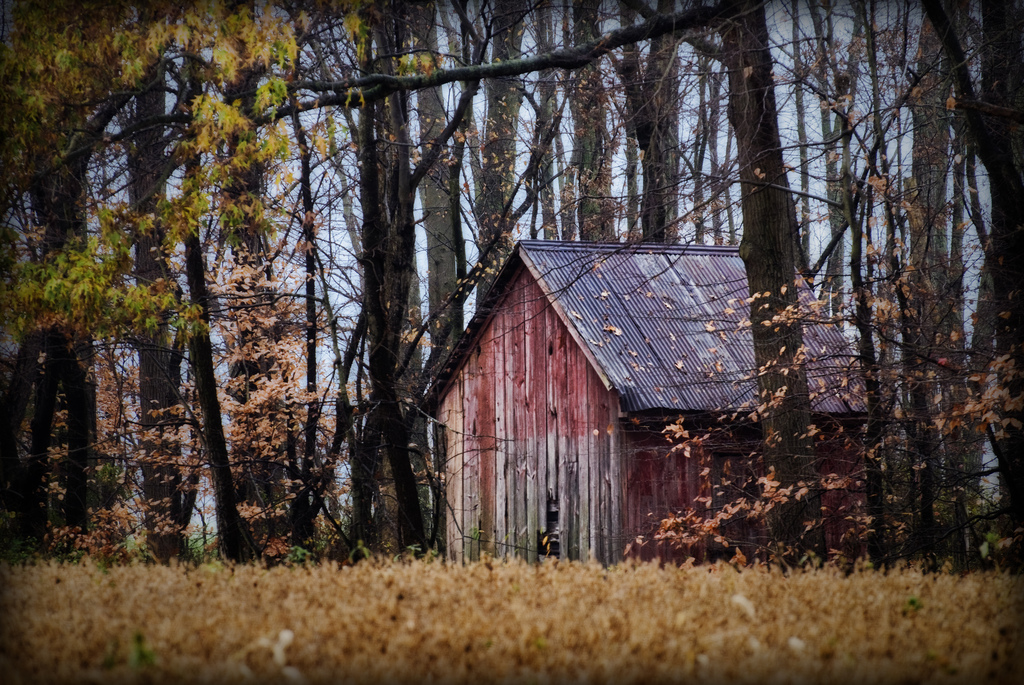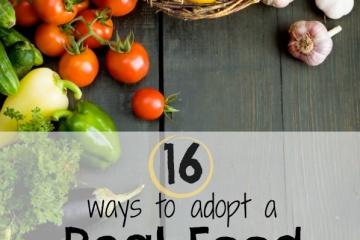
No, this post is not about shoring up the tuff shed in your backyard and filling it with food.
For Locavores (or folks who strive to eat food grown and produced locally), the term ‘foodshed' is used to define the nearby area that can provide food for a particular community or city.
Here in Los Angeles, we are blessed with beautiful produce year round, yet most folks still zip through the grocery store buying strawberries in December, oranges in August, and olive oil from Spain. Sad to say, bananas and coconuts don't grow locally for most of the residents of the continental United States and that's true for us spoiled Californians too. Yet, I will still buy coconut products from southeast Asian, and bananas on occasion from South or Central American. But aside from the occasional exotic treat or imported staples, my family aims to eat seasonally and locally as much as possible – when it comes to fruit, this means stone fruit and berries in the summer, apples and pomegranates in the autumn, and citrus in the winter.
I eat organic – so why is local so important?
Produce from your local grocery store travels on average 1500 miles from where it grew to where it will be eaten* – that's half way across the vast United States. By the time its on your plate, the nutrient profile of produce (even organic) has greatly declined, and even more importantly, its journey has depleted precious fossil fuels in transport – all so New Englanders can have mealy watermelon and translucent tomatoes in January.
Local food, on the other hand, is more nutrient-dense and wastes far less non-renewable natural resources. Beyond the nutritional and environmental impact of your food traveling a vast geographical distance, honoring your foodshed helps to cultivate respect for the land where you live, the plants and animals that can thrive there, and the livelihood and culture indigenous to the community. Disciplining ourselves to source food locally engenders a sense of stewardship for the land where we live rather than the flippant attitudes bred by an overabundance of cheap and nutrient-deficient food grown elsewhere.
More and more, Organic is becoming a label that creates excessive paperwork and costs for small farmers and a disguise for some large producers to feign good intentions. Don't get me wrong, organic food is usually superior, and the standard is important to create a benchmark for consumers, but buying local and sustainably raised food eliminates the need for tight regulations.
Where are the boundaries of my foodshed?
There is no exact measurement to define a foodshed – some say it's a 150 mile radius, other's say it's an easy days drive from home. The government defines local as “total distance that the product is transported is less than 400 miles from the origin of the product.”
Personally, I think the exact radius of your foodshed is less important than an ernest intention to eat as locally as possible.
For my part, I buy pasture-raised beef, chicken, pork, and lamb from farmers based about 100 miles from my home who travel to my local farmer's markets each week. We get a farm box each week from Abundant Harvest Organics – a collective of farmers centered about 200 miles from my home – providing seasonal fruits, veggies and herbs; raw milk, pastured eggs, raw honey, and some grassfed beef. I will also buy cheese and butter – a whopping 400 miles from my home – but I buy it in bulk and it still feels local compared to cheese from New Zealand or Ireland. This is balance with goat milk, eggs, and lemons grown by my neighbors. This summer, we are growing strawberries, tomatoes, herbs, and greens in the sparse sunny spots of our yard.
Sometimes cost outweighs local because sadly it is often cheaper to import that buy from within your own foodshed. And some foods are worth importing for their superior quality – we buy celtic sea salt, fermented Vietnamese fish sauce, wild caught seafood, and coffee beans grown from far away lands – but I do so consciously, not with abandon. While many may argue that I dip way outside of my foodshed, overall I feel like we don't recklessly eat food flown and trucked in from around the world (though there's certainly room for improvement.)
Now I know if you live a harsher climate than me, you may be grumbling about the feasibility of eating mostly local foods year-round. But I would like to point out that folks who live areas with extreme climate (whether it's desert heat or long, cold winters) have an even greater responsibility to respect their local foodshed as devoutly as possible. Yes, it will take more creative thinking and more work, but root cellars are due for a revival, and in the meantime, deep freezers and dehydrators are a wonder of modern technology.
10 ways to support your local foodshed
- Find out what grows locally, seasonally AND sustainably in your area – This may seem simple, but I am still amazed by some of the produce that grows in my region – kiwis, stevia leaves, and lemongrass were all surprises that appeared my my farm box. On the flip side, just because something is local, does not give it full license to be awesome – just ask anyone that lives near a Concentrated Animal Feedlot Operation. Local berries sprayed with pesticides are out too.
- Go to the farmer's markets as often as possible. Notice that at the end of a season, seasonal produce will be abundant, cheaper, and absolutely delicious. Be wary of stands that sell the same produce year round. Ask the farmers how and where their products were grown.
- Grow your own – Don't have a plot of land for gardening? Consider converting your lawn or window boxes. Take advantage of city roofs. Find or start a community garden in your neighborhood. Feeling inspired? Raise a couple of chickens or a goat.
- Get a farm box. CSA (community supported agriculture) and other programs help to bring the fruits of your foodshed and convenience together for the mutual benefit of farmers and consumers (a.k.a. co-producers).
- Visit local farms and get to know your farmers – Seeing where and how your food is grown and raised will forever change the way you feel about what you eat. Conversely, if you haven't seen important documentaries such as Food Inc. and Fresh, you will be both horrified by how the the food for the masses is produced and grateful that you eat from your foodshed.
- Buy seasonal produce in bulk when it is abundant, then can, freeze, and dry for the winter. This is especially important if you live in a climate that makes year round local produce prohibitive.
- Eliminate non-essential items grown out of your food shed. I don't know about you, but I NEED my imported dark chocolate. But I can happily drink local organic California wine rather than Italian or Spanish vino. Point is, be picky about what you will import.
- Aim to reduce non-foodshed item to 10% or less of your consumption. While this may seem extreme, so is the state of our planet's health. For every one I can think of that eats local neighborhood eggs, I have a blood relative that's eating at Burger King and buying groceries at Target. We've got to strike a balance.
- Find businesses (restaurants, cafes, markets) that support local food, and frequent them. It's easy to turn a blind eye when you're out and about, but voting with your dollar goes a long way to encouraging businesses to support the local foodshed economy.
- Speak up. This all may seem like common sense to you. But just a flip through your Facebook news feed or a stroll through a conventional supermarket, and you will be reminded that not everyone sees things from the eyes of a locavore. Host dinners, and tell your guests about the local farms and ranches that grew their food. Take your friends on a farmer's market outing or on a trip to meet your raw milk cows. Spread the world and support your foodshed. One day, it may be the only food you've got.
Some sites that can help you find your foodshed resources:
So, I'm curious…
How wide is your foodshed? How much of your food do you get locally? For what items do you make an exception?
Image credit: Jeff Weese











being in BC I’ve had to make more than I care too…especially with fruits and veggies 🙁
I don’t make exceptions willingly, only when I can’t find a local source, and am gradually narrowing my food shed. As I keep saying on my page, with small steps we will get there eventually!
Roxanna – How long’s the growing season up there?
thank you for this post emily! i’m wondering if you have specific farmers that you purchase from at farmer’s market that you could recommend?? thanks!
kimberly
Hi Kim –
Wed and Saturday Santa Monica:
Pork and lamb from Marcie Jimenez
Lindner bison
Organic Pastures Raw Dairy
Sunday Mar Vista:
Dey Dey’s – beef, chicken, and sometimes pork
Sunday Santa Monica (at Ocean Park and Main):
Spring Hill Jersey cheese and butter
I will also buy bacon from LIndy and Grundy (the boutique butcher in Hollywood) because they will slice it thin (which makes it more cost effective for us) and shrink wrap to order. So delicious, but a bit pricey.
Thanks for the post Emily. I’m a stay-at-home mom to 4 and have been wanting to start eating organic because of all the health benefits. I just don’t know where to begin. I shop weekly and try to be frugal yet healthy, but I know that eating organic will be a little more pricey but so worth my family’s health. Is there any way that you could advise me as to a start point? Thank you! 😉
Hi Jamie – Sorry for the delayed response. Here’s a post to get your started with the basics of Real food:
http://holisticsquid.com/nutrient-dense-diet/
And here’s a series on Real Food on a Budget:
http://holisticsquid.com/how-to-eat-real-food-on-a-budget/